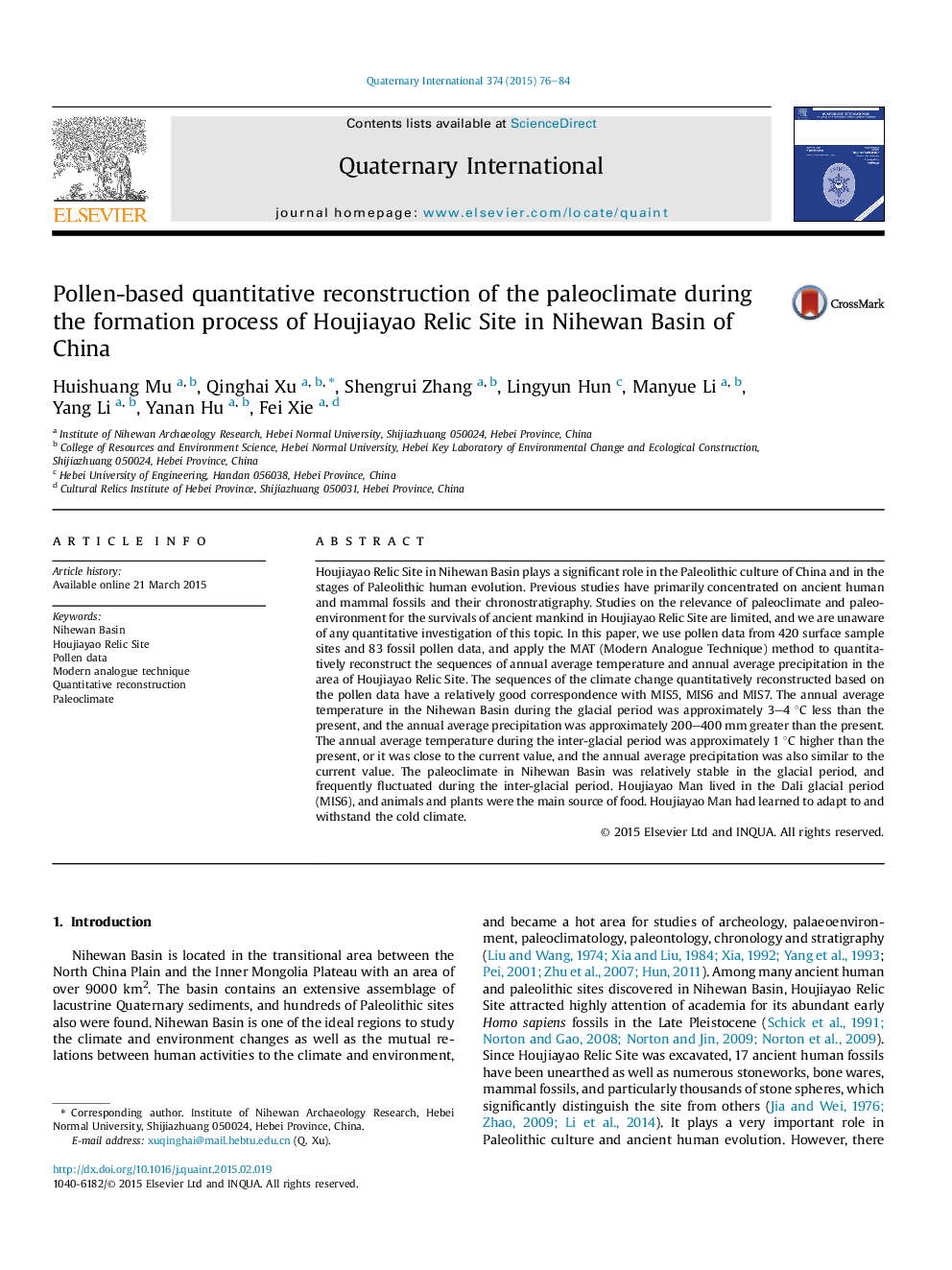| Article ID | Journal | Published Year | Pages | File Type |
|---|---|---|---|---|
| 1040702 | Quaternary International | 2015 | 9 Pages |
Houjiayao Relic Site in Nihewan Basin plays a significant role in the Paleolithic culture of China and in the stages of Paleolithic human evolution. Previous studies have primarily concentrated on ancient human and mammal fossils and their chronostratigraphy. Studies on the relevance of paleoclimate and paleoenvironment for the survivals of ancient mankind in Houjiayao Relic Site are limited, and we are unaware of any quantitative investigation of this topic. In this paper, we use pollen data from 420 surface sample sites and 83 fossil pollen data, and apply the MAT (Modern Analogue Technique) method to quantitatively reconstruct the sequences of annual average temperature and annual average precipitation in the area of Houjiayao Relic Site. The sequences of the climate change quantitatively reconstructed based on the pollen data have a relatively good correspondence with MIS5, MIS6 and MIS7. The annual average temperature in the Nihewan Basin during the glacial period was approximately 3–4 °C less than the present, and the annual average precipitation was approximately 200–400 mm greater than the present. The annual average temperature during the inter-glacial period was approximately 1 °C higher than the present, or it was close to the current value, and the annual average precipitation was also similar to the current value. The paleoclimate in Nihewan Basin was relatively stable in the glacial period, and frequently fluctuated during the inter-glacial period. Houjiayao Man lived in the Dali glacial period (MIS6), and animals and plants were the main source of food. Houjiayao Man had learned to adapt to and withstand the cold climate.
